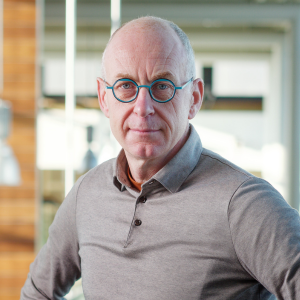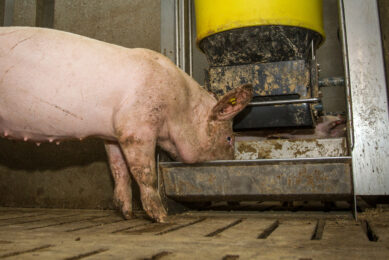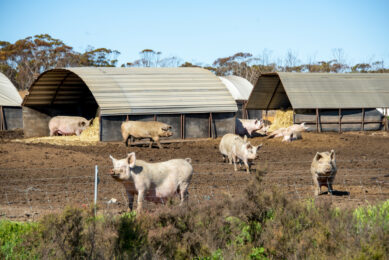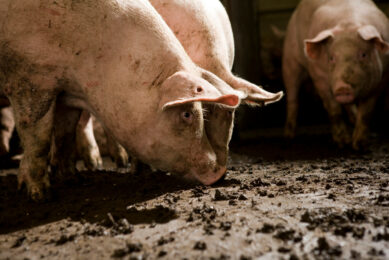Farm visit: A pioneering AI room with loads of space
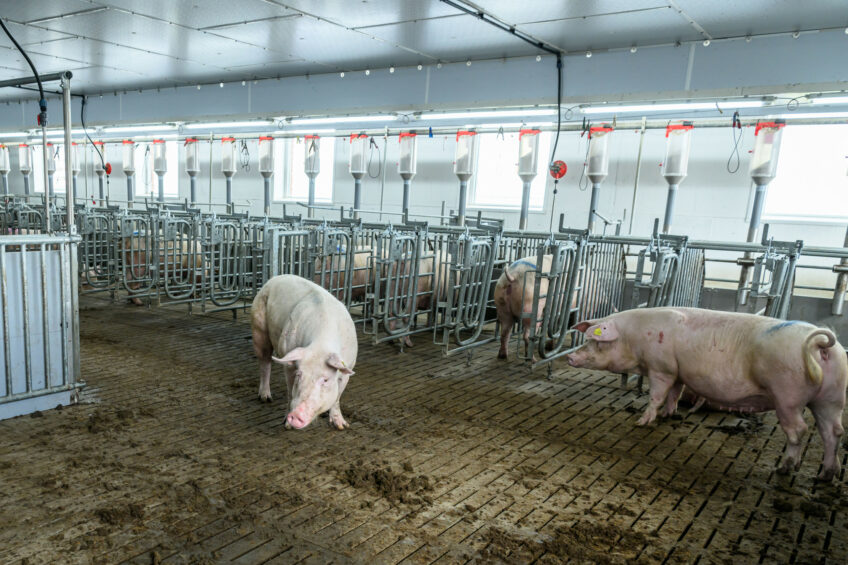
Farmer Eckhard Grobbe has a mixed farm with 330 sows in Lower Saxony, Germany. Anticipating new welfare legislation in the breeding area as from 2029, he recently built an entirely new artificial insemination (AI) room, ready to face the future. The piece of pioneering work might be a glimpse of what future pig production might entail.
“Wow – they do have a lot of space!” The Pig Progress photographer looks surprised when he steps into Eckhard and Gunda Grobbe’s new insemination facility. And that amount of space is exactly why this farm in Itterbeck, Lower Saxony, Germany, is the reason for this journalistic visit.
Spacious impression
In itself, the new pig house is not enormously large: about 450 m2. But seeing that this facility is intended for 40 sows, a handful of gilts and 2 search boars, it certainly does give a very spacious impression. Construction work started in 2021, the insemination room was taken into use in 2022 and it is nothing short of a decent piece of German pioneering work.

After all, conventional pig farming in Germany is supposed to offer sows the opportunity to walk freely in this breeding house as from February 2029. That means that sows can only be confined for a short time for the purpose of insemination, inspection or veterinary treatment. After that, they must be able to walk around again immediately; spacing requirements are 5 m2 per animal.
The stricter welfare standards are a reason for many German pig farmers to give up. Grobbe says: “In the direct vicinity, I hear about the capacity of roughly 1,000 sows that has disappeared. I think all in all, some 30% to 40% of the sow herd will disappear.”
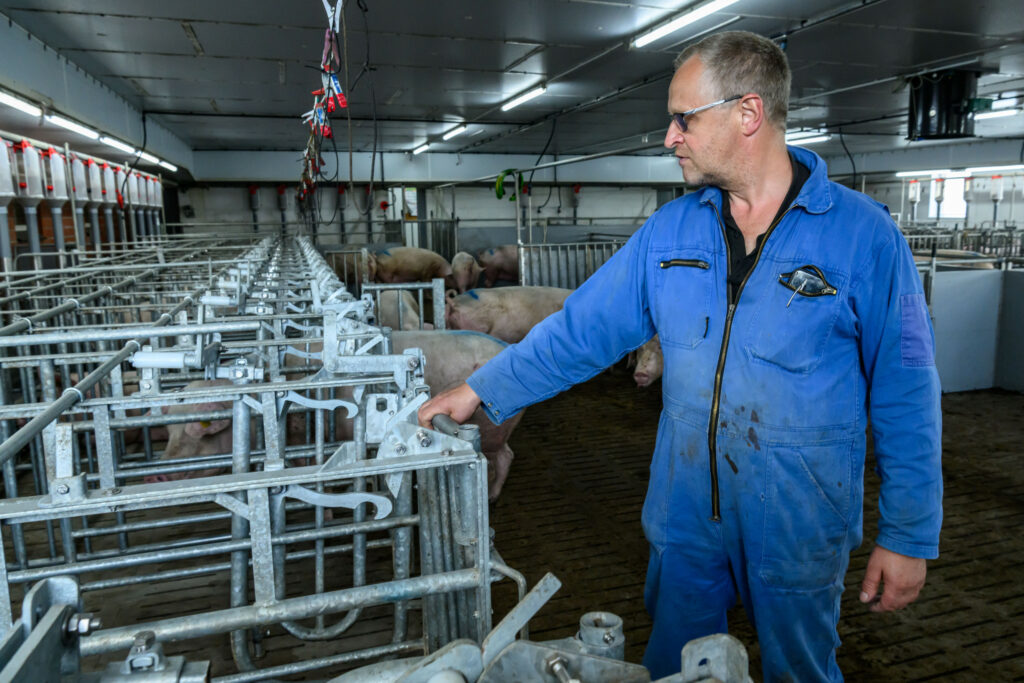
Coincidence
Grobbe, however, chose another road and did get a new insemination room. The old one had been about 30 years old and was in need of replacement. The ball got rolling when the Grobbe family wanted to build a new nursery house. He was tipped off to combine the permit application for that new nursery with one for a new AI facility. Including a breeding facility would prioritise the bureaucratic process as subsidies for renewing breeding houses were available in 2022. The federal government in Berlin matched about 40% of the AI house’s construction costs. That did not make the new facility a bargain though, as total costs for the insemination centre alone amounted to €500,000.
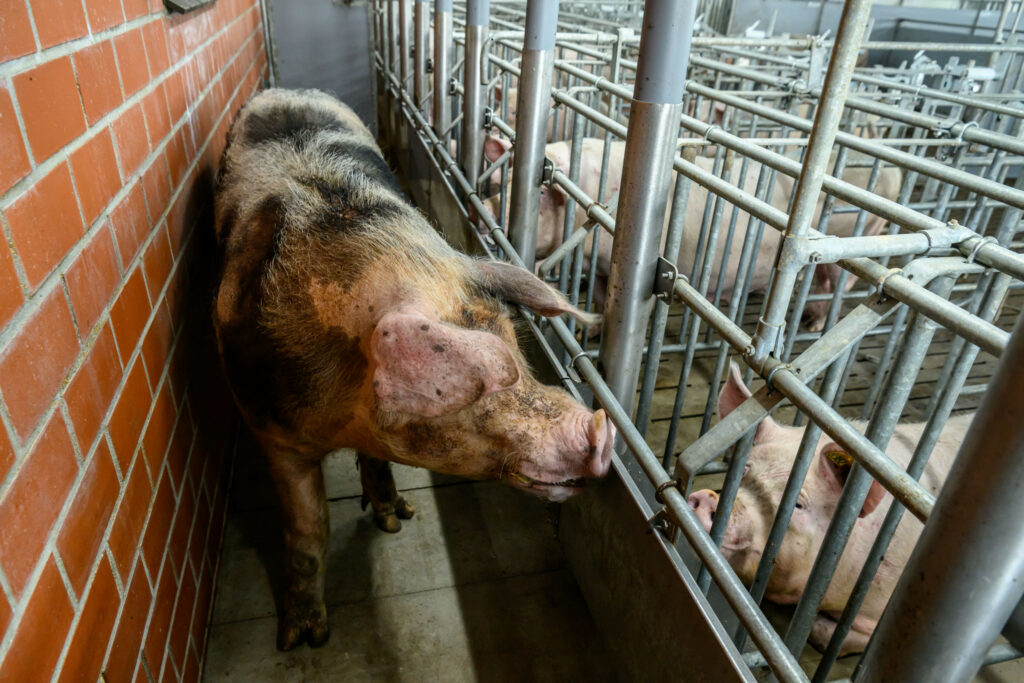
For that money, a house was designed that provides space as well as light. The barn is divided into 2 equal areas for 20 animals, with 20 self-catching crates in addition to the exercise area (5 m2 per sow). The barn has large windows and LED lighting above each trough, mimicking daylight. Fresh air comes from a panel above the feed alley. Under the barn is a manure pit of about 1 metre deep.
The sows walk on a slatted concrete floor. Straw is not something that makes Grobbe happy, as he points out. Cleaning it out is a lot of work and, besides, it can clog the manure pits. He says, “I do not really feel like having a ‘straw arena’. But then again, I don’t have a high-welfare barn; this is conventional pig farming.”
2-week system
Daily practice at Grobbe is a mishmash of future and current legislation. Because the farm operates on a 2-week system, the sows stay in the new house for 2 weeks. After that, they are moved twice to a different regime. Under current European legislation, sows can still be kept in crates until 28 days after insemination, after which they must go into group housing. From 14 to 28 days, sows therefore end up in a house with crates, after which they are moved to group housing with groups of 6 to 8 sows and a space of 2.5 m2 per sow. Grobbe shakes his head. “Whoever came up with these new regulations… There is just no logic behind it now.”

Production remains stable
Still, it is not all doom and gloom. Grobbe admits that if he had to redesign the insemination area, he would again design it in the way it is done now. While inspecting the sows, he says he enjoys working in it, and the barn climate is good. The fact that the sows can walk around after weaning also really helps, he says. It helps the animals get in heat better, he can tell.
The downside of the combination of sows coming in heat and having more freedom is that they can also fight with each other. That shows in practice, as every now and then there is a lot of screaming through the house when 2 of them are in a fight. Several sows have scratches on their flanks. At the moment it is still allowed to address such a situation with temporary confinement, but this will no longer be allowed in the future.
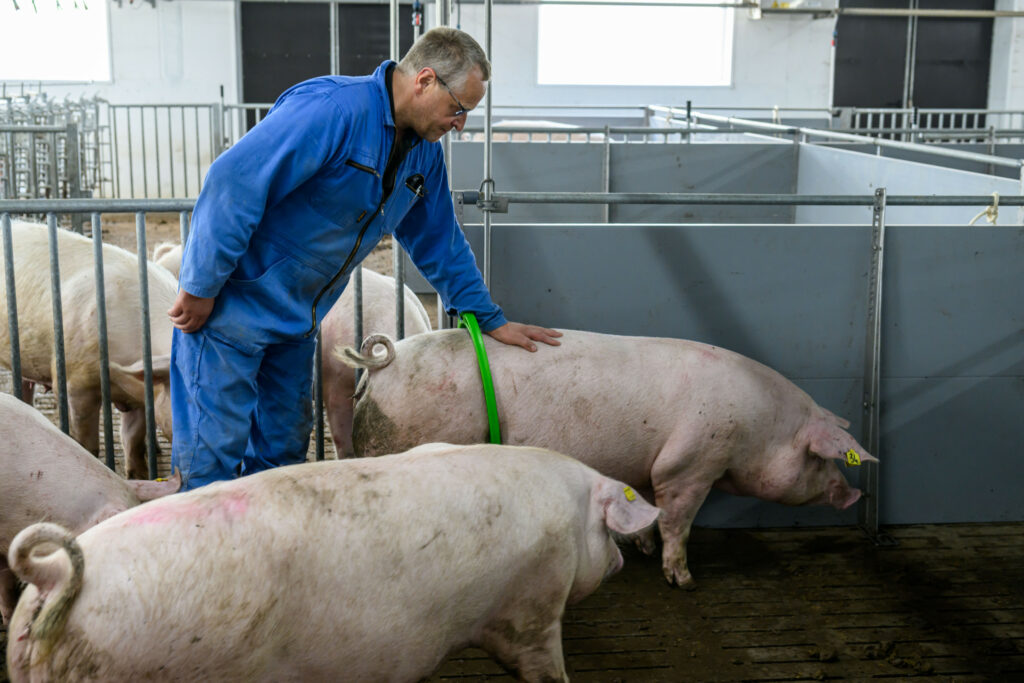
The new breeding system does not translate into a higher number of returns. After the first insemination, 92% of the sows are pregnant. The number of piglets born alive also remains stable at 15. That, however, might also be related to a recent switch to a different genetic line — he opted for using TN70 sows instead of Topigs 20, from the same breeding organisation.
Sons now in charge
How to move ahead from here? Possible additional requirements in the future have been taken into account, Grobbe says. “One cannot rely on any government these days, not in Germany, not in the Netherlands, not in the EU. So, should they decide in the future that roaming outside will become mandatory for sows in the breeding house, then we will be prepared. The new house has two large double exterior doors, to which an exit with a roof can easily be added, if so desired.”
Another change imminent in Germany is related to free farrowing. Adjustments in that direction do not have to be completed until 2036. Grobbe says, “One thing is for sure, I am not going to implement those changes myself.” His 2 sons are now 17 and 15 years old, and both have shown an interest in farming. “By then, they will just have to see what they would like to do.”
Co-author: Vincent ter Beek


